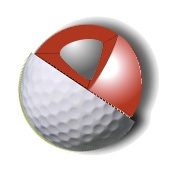
If you play a random assortment of golf balls, you're giving up strokes. Simple as that. Even if you play a single model from a specific brand, it may not be the best ball for your game.
This is an easy problem to correct thanks to the science of ball fitting. Like club or putter fitting, ball fitting is a step-by-step process to determine what characteristics will maximize your driving, iron play and short game.
Ball fitting may be conducted while actually hitting shots under the watchful eyes of a launch monitor and technician, or by filling out a simple questionnaire. Here's how Bridgestone does it:
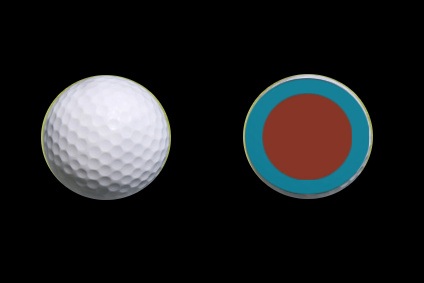
In person:
- You'll choose a ball and hit several shots with the driver.
- The pro will analyze data from the monitor and confirm that you are playing the right ball, or recommend a different one.
- You'll then hit shots with the recommended ball, compare stats with shots hit using the first ball, then select the one with the best results.
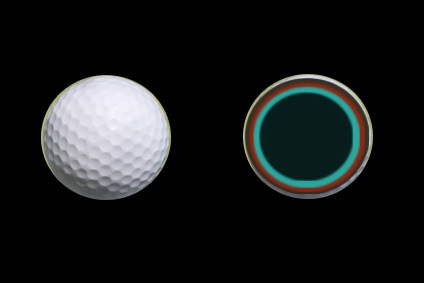
Online form:
You'll be asked the brand/model of your current ball as well as:
- Your average score range and driver distance.
- The area of the game that's most important to you (distance/accuracy or short game control).
- Your usual shot shape and trajectory (and whether you want to change it).
- Spin preference (more/less/same as your current ball).
Once finished, Bridgestone will suggest one of its current models.
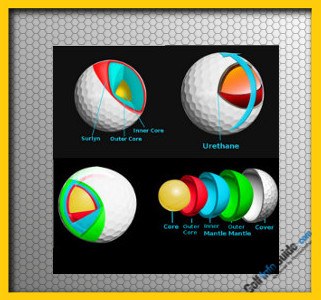
All About Custom Fitting for Golf Ball
When you think about the equipment you use to play golf, you think first and foremost about your clubs. You might also think about your shoes, your bag, your cart, and maybe even your clothes. However, somewhere in that mix, the golf ball needs to have its place as well. In fact, it could be argued that the ball is the single most important piece of equipment you have in your possession when you step onto the first tee. With the right ball in hand, you will have the opportunity to hit a number of great shots throughout the day – and you might be able to walk away with a good score when all is said and done.
Unfortunately, many golfers fail to put as much effort into picking out the right ball as they put into picking out the right driver. Despite the major importance of the ball you play, many golfers will simply pick up a cheap dozen in the pro shop before they get started. To say the least, this is a mistake. If you are at all serious about your game, you will put some significant time and effort into finding the right ball. And, once you do find the right ball, you will stick with that model for as long as possible.
In this article, we are going to cover a number of topics related to finding the right golf ball. As you can tell from the title, custom fitting is going to play a role in this process. It will take a bit of time to find the right ball, and you may have to invest some money in the process as well. However, when you are finished and you have identified a ball which is a great fit for your needs, your game will be better off as a whole. And, since many manufacturers produce the same golf ball models year after year, you should be able to stick with your choice for the foreseeable future. Unless something dramatically changes in your game, or the ball you pick goes off the market, you won't need to repeat the custom fitting process anytime soon.
Before we get too far into the topic of finding the right golf ball, it should be stated clearly that simply spending a lot of money is not the right answer. Some golfers, instead of going through a ball fitting process, just decide to buy the most expensive box on the shelf. After all, an expensive ball has to be better than a cheap one, right? Well, not necessarily. Sure, the high-end golf balls are quality products, but that doesn't mean they are right for your game. Each golfer is unique, and you need to match up a ball to your unique skill set in order to perform at the highest level possible. It may be that you need an expensive ball, or it may work out that you can play better with a mid-level model. Only by going through the ball fitting process will you know for sure.
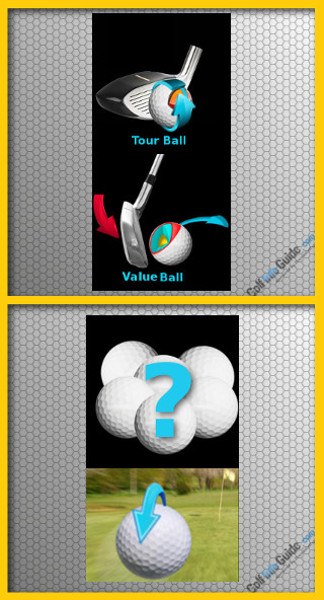
The Importance of Ball Fitting
If you stop to think about it for a second, it makes perfect sense that the golf ball would be a critical piece of your equipment setup. After all, the ball is the object you are trying to send toward the target with each swing, so it needs to be able to hold up its end of the bargain. Even the best driver or putter in the world isn't going to do much good if it is paired with a lousy golf ball.
To help you gain a better understanding of why ball fitting is so important, we have created the list below. Once you review this list, we hope you will have all the motivation you need to get to work on finding the perfect golf ball.
- Create the perfect trajectory. One of the biggest jobs the golf ball has in your game is to provide you with a great trajectory. Based on the dynamics of your swing, you need to find a ball which is going to fly at an appropriate height, carry a significant distance, and come down in a controlled manner. If you use a ball which flies too high, you are going to struggle to play in windy conditions, and you might not have much control over your distances. On the other hand, if you use a ball which flies too low, your shots will have a short carry distance and they will take big bounces after they land. Finding the happy medium should be the goal of every golfer. To get there, you need to find the golf ball that provides the right blend of characteristics for your swing.
- Offer feel around the greens. Using the right golf is not just about hitting great full shots. You also need to play well on and around the greens, so the ball you pick has to hit the mark in this category as well. Feel is a subjective thing, as one player may love the feel of a certain ball while another player hates it. Some golfers like golf balls with a firm feel, and others prefer a softer cover. Whatever you happen to like with regard to the short game, make sure the ball you pick matches with your tastes (while still meeting your full swing needs).
- Bring the ball to a stop. Many golfers think that when it comes to spin, more is always better. That is absolutely not the case. Sure, there are some occasions where you want to have a ton of spin on the ball, but other times you would be better off with a rather low spin rate. Having the ability to add or remove spin on your shots largely comes down to what kind of ball you use (and your skill, of course). A good golf ball, and one which is well suited to your game, will allow you to hit a variety of shots based on the situation at hand. Also, you should be thinking about picking a ball which can spin at a rate that is appropriate for the course conditions you usually encounter. For example, those who frequently play on dry golf courses will need a high spin rate to stop the ball. Those who play on soft courses, on the other hand, can usually get by with a firmer ball that offers less stopping power.
- Fit in your budget. This is a point that needs to be made, even though it doesn't actually have anything to do with your on-course performance. When picking a golf ball to use round after round, you have to be sure that the ball in question is going to fit within your budget. As an amateur golfer who plays this game for fun, you have probably decided how much money you are willing to invest on the links. If you find that a given ball matches with your swing, but costs more than you want to spend, you may need to keep looking. Fortunately, there are a variety of golf balls on the market at a variety of price points, so you should be able to find something you like in a price range you can afford.
Ball fitting is important. It isn't as important as things like your swing technique or your mental approach to the game, but it is certainly just as important as club fitting. By having the right ball in your bag when you head out for a round of golf, you will be able to produce a variety of shots based on the demands of the course. As an added benefit of ball fitting, your game should grow stronger and stronger over time if you stick with the same model. If you have been putting off custom ball fitting up until this point, do so no longer. Take this step right away and your game will be better for the effort.
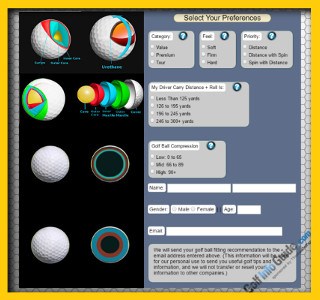
A Couple Options
Thanks to a long list of technological advancements in recent years, there are now a couple of useful options for golf ball fitting. In days gone by, that would not have been the case. Previously, golfers had just one choice – trial and error. You would pick out a golf ball in the shop, try it on the course, and go from there. Eventually you may work your way to a golf ball which was well suited to your game, but it could take a while. Not only would this be a time-consuming process, but it would also be expensive as you would need to buy a number of different models before finding the right one.
The days of trial and error are over, or at least they should be. There is no reason to go about this process in that manner when you have better options available. The two primary options for custom ball fitting are listed below.
- In-person ball fitting. If you would like to use the best technology the game has to offer in order to find the right golf ball, an in-person ball fitting is the way to go. This process is going to be completed at a local golf facility with the help of a professional. To start, you will be asked to hit a number of shots while a launch monitor tracks your swing. Once that data has been collected, the computer will provide information which can be used by the pro in order to make golf ball recommendations. Your spin rate is a big part of the equation here, as is swing speed, angle of attack, and other factors. With the combination of the launch monitor and the experienced eye of a professional, you should have no trouble at all finding the perfect golf ball when using this plan.
- Online ball fitter. Should you decide that you don't want to take the time to go through an in-person ball fitting, you may use an online ball fitting form to help narrow down your choices. This option will not be as precise, but it can still do a good job of helping you find an appropriate ball. By answering a few simple questions about your game, such as your average driving distance and your average score, the website you use will make recommendations for your consideration. From that point, it will be up to you to select one of the suggested models in order to try it out for yourself.
Above, we mentioned that trial and error golf ball fitting is a thing of the past. That is true, but only to a point. You are actually going to still want to do a little testing on the course, but only after one of the fitting options above has been employed. For example, let's say that you went through an in-person ball fitting and you found that there were three different ball models which would meet your needs. How do you pick a winner? Testing on the course. Buy a sleeve of each of the three contenders and try them out for yourself. Most likely, you will enjoy the feel of one of the golf balls better than the others, making your final decision rather easy in the end.
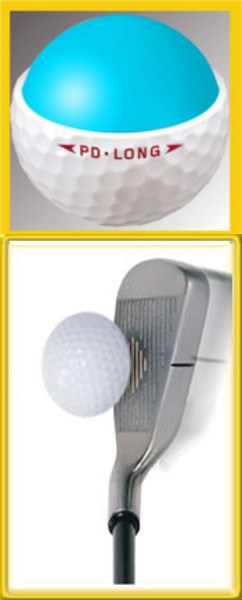
Getting Comfortable
It has never been easier to change golf equipment than it is today. If you have a bad day on the greens, for example, you could order a new putter online as soon as you get home after the round. In fact, if you were really frustrated, you could even order a new putter on your phone – before the round is even over. This kind of convenience is a nice luxury to have, but it can also be a problem. If you find yourself frequently changing equipment from round to round, you may be doing your game more harm than good.
This discussion is important in this article because it relates both to the golf ball and the rest of your gear in general. Many golfers never do settle on a specific type of ball, instead just playing whatever is on sale or whatever they find in the woods. Unfortunately, constantly switching from golf ball to golf all is going to make it hard to develop any consistency in your game. You will never know exactly how the ball is going to respond to your swings, so you won't be able to plan your shots with any sense of confidence. If you are willing to take some time to pick out the right ball for your game, however, and then you stick with that ball over the long run, you will develop great trust in what that ball can do.
Just as you want to be able to trust your golf ball, you need to have trust in the rest of your equipment as well. As mentioned above, one of the common places for golfers to make a change is with the putter. This is usually a bad idea. Even if you are putting poorly, you are far more likely to find the solution in working on your technique rather than switching out clubs. Most likely, something has gone wrong in your stroke, which is why you are missing so many putts at the moment. Instead of spending money on a new club, spend time on the practice green and work hard on the basics of your technique. Once your stroke gets back in line, you will probably see that the ball will begin to find its way into the bottom of the cup far more frequently.
Another club you should trust for as long as possible is your driver. This is a club you will frequently use 10 times or more during a single round, meaning you want to have a strong bond with this one as well. You won't be able to keep your driver for as long as your putter, since the face of the driver will wear out at some point, but you could get a couple seasons or more from one driver, depending on how often you play. Again here, you don't want to toss your driver out of the bag just because you have a bad day off the tee. Remember all of the good shots you have hit with the club and look to fix your technique rather than just buying a new stick.
In the long run, you are better off trusting the equipment you have placed in your bag, even if you start to struggle on the course. However, there will come a time when you want to look for new gear. This is the case when you are sure you are making good swings and you still aren't getting the results you expect. A club fitting is a great way to confirm your concerns about a given club – take it with you to a fitting session and see how it is performing. If it does need to be replaced, you can use the data from the club fitting to find a new option to add to the bag. Whether you are talking about golf balls or golf clubs, using the help of a fitting session with a local pro is always a wise choice.
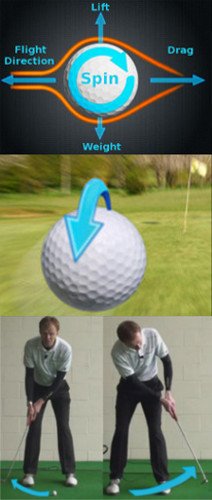
Adapting to a New Ball
The whole point of a custom fitting process is to find a golf ball that you can use for many rounds to come. Once you get to the point of having picked out a new ball, it will be time to put that ball into play on the course. Unfortunately, the first couple rounds might not go quite as smoothly as you would hope. There will be a period of adjustment to work through before you can start posting the kinds of scores you have in mind.
To make sure that adjustment period goes as smoothly as possible, consider the tips below.
- Spend plenty of time on the short game. It is when you are on and around the greens that you will have the most work to do in terms of making an adjustment. Each golf ball has its own unique feel, so your new ball is almost certainly to feel different than your old ball when chipping and putting. Make it a point to spend as much time as possible on your putting and chipping practice prior to your first round. If you can establish a good feel for the short game shots you need to play, the transition to a new ball will be completed much faster.
- Take note of your yardages. There is a good chance that your yardages are going to change rather significantly once you put a new ball in play. During the first few rounds you play with the new ball, consider keeping a notebook where you can write down all of your yardages as the round unfolds. After tracking your distances for a handful of rounds, you should have a good idea of how far the ball is traveling and you can adjust your club selections accordingly.
- Watch the ball fly. Sometimes, the best thing you can do to get used to your new ball is simply to watch it fly. Pay attention to how the ball moves through the air, and note any patterns that develop. It should take too long before you are able to predict how the ball is going to fly before you even hit the shot. Once you get to that point, you will be in great shape to shoot some of the best scores of your life.
To be the best golfer you can be, it is important to pay attention to every little detail in your game. By going through a custom ball fitting process – ideally one which is completed in person – you can find the right ball to help you elevate your game to a new level. Trust the information you receive during your ball fitting, and give yourself some time to adapt to the new ball before you expect great results. Good luck!







